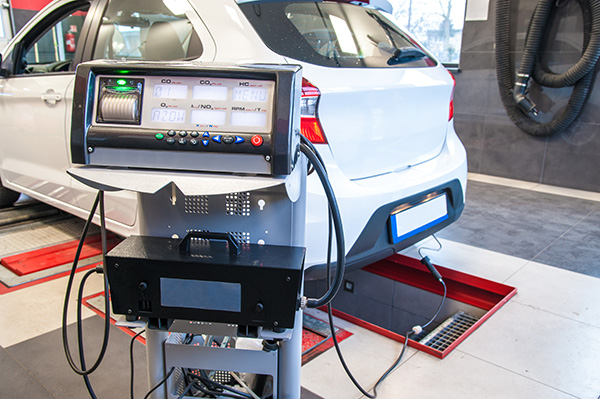
If you own a car that’s 2000 or newer, you’re likely familiar with California’s strict smog regulations. Every couple of years, vehicles must pass a smog check to stay road-legal. And while the test itself isn’t overly complex, you can take a few steps to increase the chances of passing on the first try. A failed smog test can lead to costly repairs, delays, and frustration, so knowing how to prepare your car ahead of time is important.
How Smog Checks Work
The test measures your car’s emissions to ensure they’re within state standards. These standards are in place to reduce air pollution and improve public health. For cars made after 2000, the test also involves plugging into your vehicle’s OBD-II (On-Board Diagnostics) system, which monitors your engine’s performance and emissions control systems. The smog technician will check your vehicle’s OBD-II system for any stored trouble codes or malfunctions that could indicate excessive emissions.
If your car’s OBD-II system detects any problems, such as misfires or a malfunctioning oxygen sensor, your vehicle will fail the smog test. Therefore, keeping your vehicle in top condition is the best way to ensure a successful test result.
1. Make Sure Your Check Engine Light Isn’t On
The check engine light is your car’s way of telling you something is wrong, and it plays a crucial role during a smog check. If your check engine light is on, your vehicle will automatically fail the test, even if the underlying issue isn’t related to emissions.
If your check engine light is illuminated, take your car to a qualified service center to diagnose and fix the problem before your smog check. This could be anything from a loose gas cap to more significant issues like a failing catalytic converter. Either way, you want the light off before you head to the smog station.
2. Complete Any Recent Repairs Early
Have you recently repaired or replaced components in your car’s engine or emissions control system? If so, your vehicle’s OBD-II system needs time to reset and recheck its diagnostics. This process, known as a "drive cycle," can take up to 100 miles of driving after a repair.
If you’ve made repairs shortly before your smog test, be sure to drive your car for several days, allowing the OBD-II system to complete the necessary tests. If you don’t, the system might not be ready, which can result in an automatic failure.
3. Drive Your Car Regularly Before the Test
One simple but effective tip is to drive your car regularly in the days leading up to the smog check. This helps ensure that your engine and emissions systems are running efficiently. Short trips and prolonged periods of inactivity can affect engine performance and increase the chances of failing the smog test.
Regular driving allows your car’s systems to warm up and perform at their best. Additionally, driving at highway speeds for at least 10-15 minutes before the test helps your catalytic converter heat up, which improves its effectiveness at reducing emissions.
4. Change Your Oil
If you’re due for an oil change, take care of it before your smog test. Dirty oil can release excess pollutants into the engine’s combustion chamber, which may cause your car to fail the emissions portion of the test.
An oil change is a simple and affordable maintenance task that can go a long way in helping your car pass the smog check. Clean oil ensures that your engine is running as cleanly and efficiently as possible, giving you a better shot at passing the test.
5. Check Tire Pressure and Battery Health
While it may not seem directly related, the condition of your tires and battery can impact your smog check results. Underinflated tires can cause your engine to work harder, which can lead to increased emissions during the test. Likewise, if your battery has recently been disconnected, the OBD-II system may not have completed its drive cycle, leading to an incomplete or failed test.
Before heading to the smog station, make sure your tires are properly inflated and that your battery is in good condition. It’s a small step, but it can make a big difference in the outcome of the test.
6. Warm Up Your Engine Before the Test
As mentioned earlier, making sure your engine is warmed up is crucial for a successful smog test. A cold engine burns fuel less efficiently, which can increase emissions during the test. To avoid this, drive your car for at least 15 minutes at highway speeds before heading to the smog check station. This ensures that your engine, catalytic converter, and other emissions control systems are operating at optimal levels.
Don’t let a failed smog test keep you off the road. At RM Automotive, our team of skilled technicians will help your car meet California’s strict emissions standards. Schedule your smog check and inspection today!